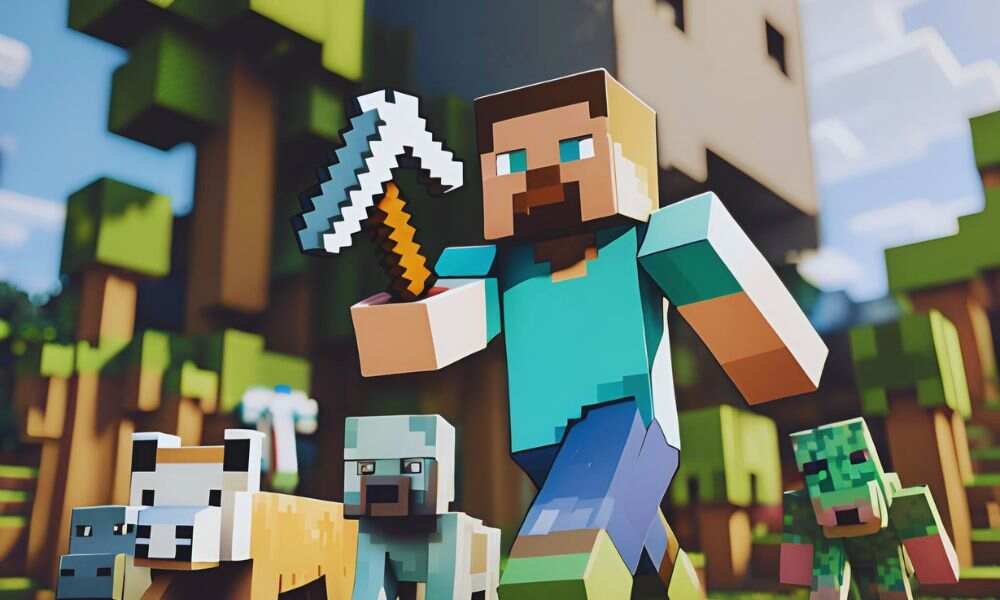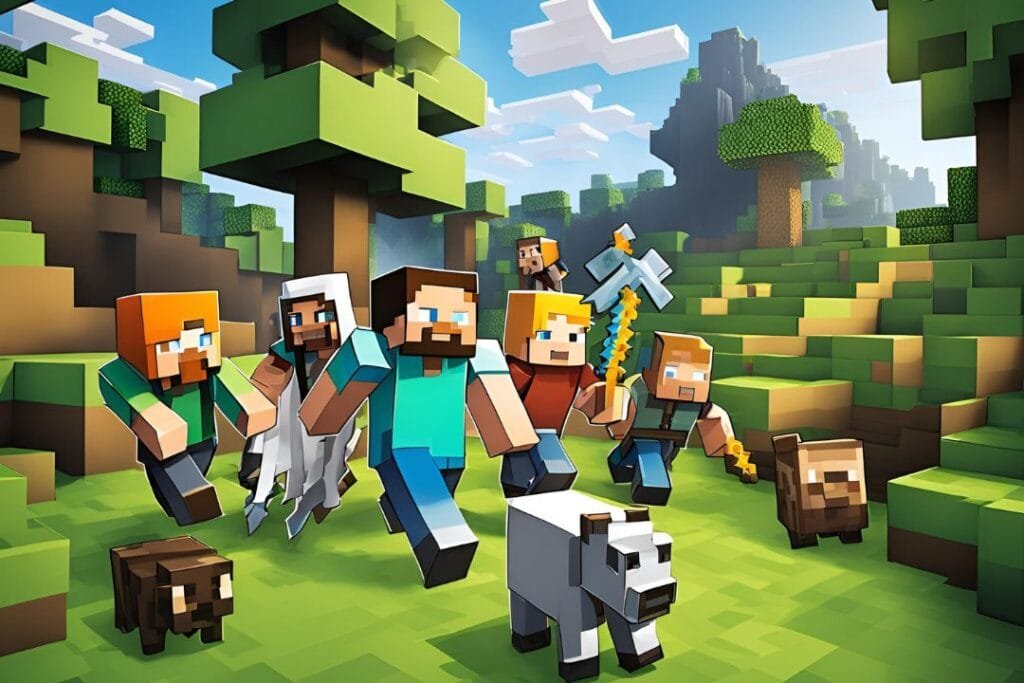Since its release in Minecraft (2009) Game Icons and Banners, Minecraft has evolved from a niche indie game to a worldwide phenomenon, captivating millions of players across the globe. Its unique blend of creativity, survival, and exploration has left a lasting mark on the gaming community. One of the game’s most distinctive features is its use of icons and banners—visual tools that allow players to express themselves, create unique designs, and even navigate their virtual worlds more effectively. In this guide, we’ll explore the origins of Minecraft’s game icons and banners, their impact on gameplay, and how you can use them to elevate your experience.
Introduction to Minecraft (2009) Game Icons and Banners
In Minecraft, icons and banners serve both practical and aesthetic purposes. Icons are used throughout the game to represent items, abilities, and other game elements. They provide visual cues to help players quickly identify objects, resources, and tools within their inventory or crafting table. On the other hand, banners are more customizable and artistic, allowing players to create personalized flags that can be placed in their world to mark territories, decorate buildings, or serve other creative functions.
Icons were part of the game from the very beginning, helping players navigate their inventories and understand what they were crafting or interacting with. As the game has expanded with new updates and additional features, so too have the types of icons and their visual appeal.
Banners, introduced in version 1.8 of Minecraft (2009) Game Icons and Banners, took customization to another level. Players can create a wide range of designs by combining different dyes and patterns on a blank banner, which can be placed in the world, worn as shields, or used as decoration.
Now, let’s dive deeper into how Minecraft (2009) icons and banners work, what role they play in the game, and how you can make the most of them.
The Role of Icons in Minecraft
Inventory Icons: Organizing Your World
Icons are primarily visible in Minecraft’s inventory system. When you open your inventory, you’ll see every item represented by a specific icon. This could range from a simple block of dirt to complex items like enchanted tools or potions. The visual representation of these items helps players quickly access and use them without needing to hover over each one for a description.
In the version of Minecraft (2009) Game Icons and Banners, the inventory was relatively simple, but as updates were released, the number of items and their corresponding icons expanded exponentially. This explosion in the number of icons corresponds with the growing complexity of the game, as new blocks, tools, and items were added over time.

Some common inventory icons include:
- Pickaxes: Representing tools for mining.
- Swords: For combat.
- Blocks: Such as dirt, stone, and wood, which can be placed or used in crafting.
- Food items: Like bread, meat, and apples to replenish health.
- Ores: Iron, gold, diamond, etc., for crafting stronger tools and armor.
Crafting Icons: Visualizing Recipes
Minecraft (2009) Game Icons and Banners crafting system is integral to progression, and icons play a crucial role in helping players visualize and understand crafting recipes. When you place items in a specific pattern in the crafting grid, the output is represented by an icon in the crafting result box. Over time, as you become familiar with these icons, crafting becomes second nature, allowing you to create complex tools, weapons, and structures efficiently.
Icon Modifications and Resource Packs
One of the greatest features of Minecraft is its modding community. Since 2009, players have created resource packs that allow for the customization of textures, sounds, and even icons within the game. If you’re someone who enjoys visual variety, you can download or create your own resource pack to change the look of Minecraft’s icons.
For example, a fantasy-themed resource pack might replace standard sword icons with something more magical, or you could change the look of your food items to match a specific aesthetic. The possibilities are endless.
The Power of Banners in Minecraft
Crafting Banners: An Artistic Endeavor
Minecraft (2009) Game Icons and Banners are a form of in-game decoration that can be fully customized by players. They are tall, thin blocks that can be hung on walls, placed on the ground, or used to create flagpoles. First introduced in Minecraft 1.8, banners allow for an extraordinary level of creativity, letting players make flags, designs, or even functional markers in their game worlds.
Crafting a banner begins with a simple base banner, crafted from wool and a stick. Once you have your base banner, you can use a variety of dyes to add patterns. The patterns you create are limited only by your imagination. Minecraft offers a variety of pre-made patterns, such as stripes, crosses, and gradients, but you can also unlock more advanced designs by adding special items like:
- Creeper heads: For a Creeper face pattern.
- Skulls: To create a skull and crossbones design.
- Mojang logo: Representing the game’s developer.
Banners can be made in any of the 16 available colors and support up to six layers of patterns. This means you can create intricate, multi-layered designs to suit any theme or purpose.
Practical Uses for Banners
While Minecraft (2009) Game Icons and Banners are often used for decoration, they also serve several practical purposes in Minecraft. Here are some common ways players use banners in their games:
- Marking Territory: In multiplayer servers, players often use banners to mark their territory or claim land. A distinctive banner design can quickly signal to other players that a particular area is taken.
- Map Markers: Banners can also be used as waypoints on maps. If you place a banner in the world and then use a map, the banner’s name will appear on the map, helping you navigate large worlds more easily.
- Decorating Builds: Whether you’re building a medieval castle, a modern city, or a pirate ship, banners are an excellent way to add detail and personality to your builds. You can hang banners from walls, place them on turrets, or use them as sails for a ship.
- Shields: You can combine banners with shields to personalize your combat gear. This allows players to carry their banner design into battle, further enhancing their in-game identity.
Popular Banner Designs
The creative community in Minecraft (2009) Game Icons and Banners has come up with countless banner designs, ranging from simple geometric patterns to intricate representations of real-world flags or iconic pop culture symbols. Some popular designs include:
- National Flags: Many players create banners representing their country’s flag to decorate their bases or mark their territory.
- Pixel Art: With enough skill, players can replicate pixel art images on banners, recreating characters, logos, or symbols from their favorite movies, games, or TV shows.
- Medieval Banners: Perfect for castles and kingdoms, these banners often feature shields, swords, and traditional heraldry.
Conclusion: Unlocking Creativity with Minecraft (2009) Game Icons and Banners
In Minecraft (2009) Game Icons and Banners are more than just simple visual elements—they’re essential tools that enhance gameplay and unlock creative possibilities. Whether you’re organizing your inventory with recognizable icons or designing intricate banners to decorate your world, these visual elements add depth and personality to the Minecraft experience.
The game’s evolution since its release in Minecraft (2009) Game Icons and Banners has only expanded the potential of these features. Icons have become more varied as the game’s item library has grown, while banners have become an indispensable part of building and personal expression in the game.
As you continue to explore the vast, blocky world of Minecraft, don’t overlook the power of icons and banners. Whether you’re a newcomer or a seasoned veteran, there’s always something new to create and discover, thanks to these iconic visual tools.

